TREATMENT
A treatment plan is designed for each patient that combines therapies developed from the traditional health and fitness systems used in Manipur. Our treatment combines the realignment, repositioning and securing of the body’s joints, tendons, ligaments and muscles.
WHAT WE TREAT
Musculoskeletal problems and misalignment of the body
We treat spinal conditions where the vertebrae are misaligned as a result of injury or due to conditions such as kyphosis and scoliosis. We also treat disc conditions such as degenerative disc disorders, bulging and ruptured discs, trapped nerves in the back, and other spinal conditions – typically resulting from accident, injury, poor posture or hereditary/genetic causes. We also treat injuries to all the joints in the body, especially knee and hip injuries.
Sports injuries
We specialise in treating sports related injuries, such as meniscus and ACL (anterior cruciate ligament) tears, patellofemoral syndrome, ankle sprains, lateral epicondylitis (tennis elbow), and shin splints.
Since our treatments return the body to correct positioning without surgery, athletes typically benefit from a shorter recovery time, and they are able to return to training faster and without the instability and reoccurrence of problems that often result from surgical interventions.
Related conditions
When undergoing treatment, the patient is also examined for other conditions or problems, which may be related to spinal misalignment. For example, lower spine injury can lead to kidney-related issues or digestive disorders, while upper spine injury can impact the proper functioning of the lungs. Using a range of therapies and natural medicines, we treat, whenever possible, all the related conditions that we identify.
Stomach and digestive conditions
Using a traditional Manipuri technique, the Bone and Body Clinic also treats a wide range of stomach and digestive disorders. The treatment is a combination of physical therapy augmented by natural medicines and remedies. Conditions such as gastric bloating, constipation, food intolerance, severe indigestion, irritable bowel syndrome (IBS), Crohn’s Disease, and perforated ulcers have all been successfully treated using this technique.
AT A GLANCE
- Back pain
- Osteoarthritis
- Scoliosis, kyphosis, spondylolysis, spondylitis, spondylosis, spondylolisthesis
- Disc disorders
- Paralysis, including multiple sclerosis and stroke
- Hips, knees, shoulders, elbows, wrists,
ankles, fingers, toes, jaw
- Meniscus tears
- ACL tears
- Patellofemoral syndrome
- Epicondylitis (tennis elbow)
- Gastric and digestive disorders
- Breathing problems
- Auto-immune disorders
- Skin conditions
HOW WE TREAT
First, we take a detailed medical history. This is essential to ensure that we are aware of the full chronology of the patient’s health problems and concerns, as well as of any past treatments and medications that have been prescribed. This often helps us to identify the origins of a particular condition and the reasons why it may have become a prolonged or chronic problem.
We then conduct a full physical examination. This starts with the spine and moves through the joints, which are checked individually to ascertain any parts of the body that may be misaligned or weakened or may have moved into an incorrect position due to an accident, injury, poor posture or as a result of other causes.
During the examination, details of how the mechanics of the body can impact a person’s health and fitness are explained to the patient so that s/he can begin to understand how the physical functions of the body work together. A full treatment programme is then produced in consultation with the patient.
TREATMENT PROGRAMMES
LENGTH AND COST OF TREATMENT
The duration of treatment depends on a number of factors such as age, general health and fitness, type of injury and secondary conditions. Usually there is a minimum treatment time of two weeks but typically for serious conditions such as scoliosis a minimum of four weeks is required.
The cost of treatment depends on the complexity of the problem and the amount of time the treatment takes. For detailed information about treatment fees, contact us so we can make a preliminary assessment of your condition and needs. Please note, an accurate estimate can only be provided following a full physical assessment.
